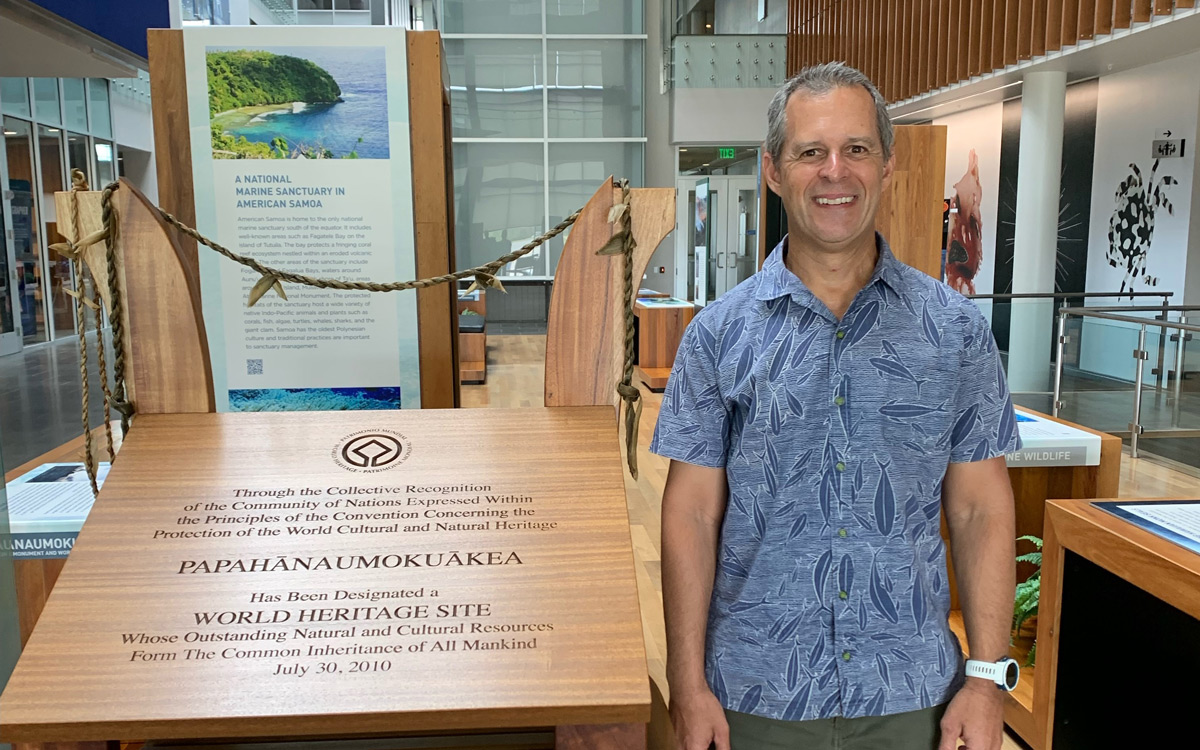News
Eric Roberts named NOAA superintendent of Papahānaumokuākea Marine National Monument

NOAA’s Office of National Marine Sanctuaries announced the appointment of Eric Roberts, a resident of Honolulu, Hawaii, as NOAA superintendent of Papahānaumokuākea Marine National Monument. He succeeds Athline Clark who retired in 2022.
Roberts previously served as deputy superintendent of the monument since September 2019, where he led a team of policy and program specialists in the day-to-day management of Papahānaumokuākea, including NOAA’s current process of national marine sanctuary designation for monument waters.
Prior to joining NOAA, Roberts worked as a civilian for the U.S. Coast Guard as the Living Marine Resources Policy and Research Specialist. He was responsible for developing District Fourteen’s first official Marine Protected Resources program that served as the flagship program for the entire Coast Guard. With eight years of prior active duty service, he also completed four years at-sea aboard two Coast Guard cutters.
As a civilian, Roberts also worked for the U.S. Air Force and the U.S. Marshals Service. He earned a Master of Public Administration degree with a concentration in oceanography from the University of Hawaiʻi at Mānoa, and is a graduate of the Federal Executive Board’s Senior Leaders Program.
Papahānaumokuākea Marine National Monument is the largest contiguous fully-protected conservation area under the U.S. flag, encompassing an area of 582,578 square miles of the Pacific Ocean -- an area larger than all the country's national parks combined. Home to the highly endangered Hawaiian monk seal, threatened green turtles, extensive coral reef habitat, and many species found nowhere else on earth, the complex and highly productive marine ecosystems of the monument are significant contributors to the biological diversity of the ocean.
Papahānaumokuākea is of great importance to Native Hawaiians, with many wahi pana (places of great cultural significance and practice) where Native Hawaiian cultural practitioners of today reconnect with their ancestors and gods. It is also home to a variety of post-Western contact historic resources, such as those associated with the Battle of Midway and 19th century commercial whaling.
Papahānaumokuākea is part of America’s National Marine Sanctuary System, a network of underwater areas encompassing more than 620,000 square miles of marine and Great Lakes waters. The network includes a system of 15 national marine sanctuaries and two marine national monuments.
The monument is cooperatively managed by NOAA (Office of National Marine Sanctuaries, NOAA Fisheries), U.S. Fish and Wildlife Service (Ecological Services, Refuges), the State of Hawai‘i (Division of Aquatic Resources, Division of Forestry and Wildlife), and the Office of Hawaiian Affairs.



